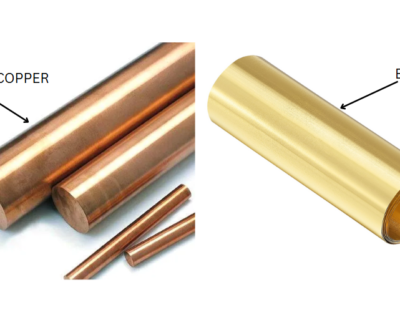Blogs
20 Interesting Facts About Beryllium?
Introduction
Beryllium, a lightweight yet remarkably strong metal, often flies under the radar when compared to popular metals like iron, copper, or aluminum. But don’t let its low profile fool you — this rare element is a powerhouse behind many of today’s most advanced technologies.
With its exceptional strength-to-weight ratio, resistance to heat, and unique chemical properties, Beryllium plays a vital role in sectors like aerospace, defense, electronics, and even healthcare.
Let’s dive into 20 interesting facts about Beryllium and discover how it continues to shape our modern world.
1. Discovery of Beryllium in 1798
French chemist Louis Nicolas Vauquelin discovered Beryllium in 1798 while analyzing beryl and emeralds. Originally named “glucinium” due to its sweet taste, it was later renamed for safety and scientific clarity.
2. Origin of the Name “Beryllium”
German chemist Friedrich Wöhler proposed the name “Beryllium” after the mineral beryl, one of its most common natural sources.
3. Beryllium Development in India (Since 1977)
India launched the Beryllium Development Programme in 1977 to support its nuclear and aerospace sectors, aiming to reduce dependency on imports and strengthen strategic self-reliance.
4. Role in World War II
During WWII, Beryllium was used in marine diesel engines, aircraft gyroscopes, and parachute buckles—valued for being lightweight, corrosion-resistant, and strong.
5. U.S. Dominance in Beryllium Production
Since 1969, Spor Mountain in Utah has been a major global source of Beryllium, helping the United States become the world’s leading producer.
6. Airbag Safety Revolution
Nickel-Beryllium alloys enabled the first inertial crash sensor for airbags in the 1990s—contributing to the widespread use of airbags in vehicles today.
7. Environmentally Friendly Recycling
Recycling Beryllium requires only 20% of the energy needed to produce it from raw materials, making it both eco-friendly and cost-efficient.
8. Beryllium Mirrors in Space Exploration
Used in NASA’s James Webb and Spitzer Space Telescopes, Beryllium mirrors can endure extreme temperatures without losing shape or performance.
9. Applications of Beryllium Oxide Ceramics
Beryllium Oxide (BeO) is used in:
- Radar and missile systems
- Cell phone transmitters
- MRI and laser equipment
- Portable defibrillators
Thanks to its thermal conductivity and electrical insulation.
10. Atomic Number and Symbol
Beryllium’s atomic number is 4, and its symbol is Be. It belongs to the alkaline earth metal group in the periodic table.
11. Strength-to-Weight Superiority
Beryllium is six times stiffer than steel and weighs only a third as much, making it perfect for aerospace structures, missiles, and satellites.
12. Nuclear Reactor Applications
Its ability to reflect and moderate neutrons makes Beryllium essential in nuclear reactors and atomic weapons.
13. X-Ray Window Material
Beryllium allows X-rays to pass through while maintaining physical strength, making it ideal for X-ray window applications in medical imaging.
14. Handle with Caution: Toxicity Alert
Beryllium is toxic when inhaled as dust or fumes. Prolonged exposure can lead to Chronic Beryllium Disease (CBD), a serious lung condition.
15. Aerospace & Defense Powerhouse
Beryllium is used in:
- Fighter jets
- Missiles
- Spacecraft components
- Satellites
- High-speed aircraft
Due to its light weight and high-temperature stability.
16. High Melting Point
With a melting point of 1287°C (2349°F), Beryllium retains its properties even in extremely high-heat environments.
17. Role in Particle Physics
Because of its low atomic number and low neutron absorption, Beryllium is used in particle accelerators and nuclear research facilities.
18. Precision Optical Uses
In satellite optics, laser targeting systems, and telescope mirrors, Beryllium provides rigidity and dimensional stability in extreme environments.
19. Electronics and Connectors
Beryllium Copper alloys are widely used in:
- Electrical connectors
- Springs and switches
- Relays in electronics
Their strength and conductivity make them ideal for rugged electronic systems.
20. Global Beryllium Mining Locations
Top sources include:
- United States (Spor Mountain, Utah)
- China
- Brazil
- Mozambique
- Madagascar
Conclusion: The Unsung Hero of ModernThe U.S. remains the leader in mining and processing this rare metal. Technology
From deep space missions to lifesaving medical equipment and everyday electronics, Beryllium quietly powers the technology we depend on. Its strength, lightness, and thermal resilience make it indispensable in our modern world.
As industries continue to demand high-performance materials, Beryllium is set to remain a key player in technological advancement for years to come.
🔗 Discover more on our website https://domadia.net/contact/




